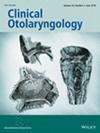Non-Recurrent Laryngeal Nerve: Surgical Risk of Injury in Comparison With the Normal Recurrent Laryngeal Nerve—A Systematic Review and Meta-Analysis
Abstract
Introduction
The non-recurrent laryngeal nerve (NRLN) is a known anatomical variation of the normal recurrent laryngeal nerve (RLN). Its prevalence is estimated to be < 1% and has a higher risk of iatrogenic injury. The risk during thyroid surgery has been reported variably in current literature, from 0% to 12%. This study aimed to systematically review the incidence of NRLN injury and present the results through meta-analysis. The incidence of injury to NRLN and RLN was compared statistically to determine its significance.
Methods
The PRISMA protocol was followed for an online search of prominent literatures. Studies were selected according to specific criteria. Quality assessment was performed before data extraction. Meta-analysis was conducted for the incidence of injury of the NRLN and its comparison to the RLN. Results were presented in the form of a systematic review.
Results
Final analysis included 17 studies. The pooled risk of NRLN injury was 7% and the risk ratio of injury in comparison to the RLN was 3.8, showing a statistically significant difference.
Conclusion
This is the first study to report the overall risk of NRLN injury and establish a statistically significant difference compared to the injury of the normal RLN. The NRLN is highly associated with the vascular anomaly of aberrant subclavian artery, which is radiologically predictable. The use of intra-operative nerve monitoring can significantly reduce the risk of injury to this nerve when it is identified pre-operatively, and the thyroid surgery should be performed by experienced thyroid surgeons with extra care to minimise the risk.

 求助内容:
求助内容: 应助结果提醒方式:
应助结果提醒方式:


